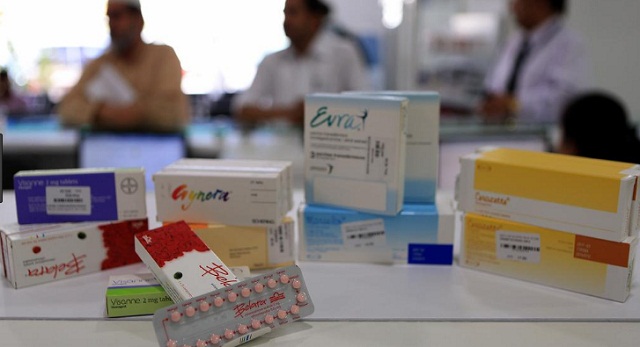
Global Family Planning giant boss blames officials for letting their beliefs get in the way of their professional responsibility
Kampala, Uganda | FLAVIA NASSAKA | Social marketing is increasingly being embraced in dealing with public health problems which require behavioral change worldwide. In Uganda, the Uganda Health Marketing Group (UHMG) has been the only entity providing health services through the approach. But that is changing. On Nov. 24 a new entrant – DKT International, joined to provide HIV prevention and Family Planning services.
The U.S-based family planning giant operates in 24 countries and started off with a digital campaign to end stigma and transmission of HIV in Uganda.
Collin Dick, DKT Uganda Managing Director Spoke to Independent’s Flavia Nassaka about where Uganda has gone wrong with contraceptives and how players can sustain health markets in the country.
DKT International has been around for more than 20 years. Why do you come to Uganda only now?
Uganda has always been on the list of countries DKT had targeted but only recently have we started doing sub – regional programmes like we have in French West Africa, Central America, the Caribbean and in Latin America. If we had just decided to come to Uganda, It would have been difficult to sustain the programme on its own as a single-country operation due to the low prevalence of modern contraceptives and high subsidies. Only when we looked at the possibility of combining the Kenyan programme and operating sub-regionally that we were confident that we could make a sustainable impact here.
What different product, service or innovations do you come with?
Our advertising will probably set us apart from the outset, as we want to speak about contraceptives and family planning products in a very different way; one that resonates more with consumers, especially young people. I think that our focus on creating strong brands that provide exceptional value and features to consumers will set us apart.
A day before you officially launched on November 23, the state of Uganda population Report 2017 was released showing that there will be one million more people in the country in the next eight years and this is partly because Ugandans have a fertility rate of 5.6 births one of the biggest in the world. What would be your advice to government to tackle threats that come with these high figures?
Scary number, isn’t it? Resources are scarce so we must slow this number down, but in a way where citizens make conscious, informed decisions, grounded in reality, not ideology of bygone days. The sad truth is that 25% of teenage girls get pregnant each year. Unsafe abortions are killing women every day, and maternal mortality rates are far too high in today’s times. If Uganda wants to become a middle-income country by 2020 it’s going to have to take drastic steps to curb these statistics. That means loosening the reins on educating young people on their options, as well as increasing the basket of products and contraceptive methods that people can choose from, whether they be in the public or private sector.
In Uganda contraceptive use is faced with a lot of stigma and myths. What strategies do you come with to ensure that more people appreciate and use birth control measures?
It comes down to providing value and creating a perception that what you are using is worth paying for. We all know that raising a family can be expensive, so shouldn’t not getting pregnant, while enjoying a healthy sex life, be worth something as well? It’s worth it to have safe and effective products that are packaged in a way that makes you want to buy them, and marketed in fun and interesting ways.
When people discuss birth control methods, many think they are talking about women issues and most times a vasectomy misses in the discussions. Why does this always happen and why do you think despite its efficacy only a small percentage of men use it?
It’s really an unfortunate situation that men don’t take more responsibility and opportunity to contribute to family planning. It’s a tough question to answer and maybe goes back to the sad reality that women have been subjugated and taken advantage for most of history. I think a lot of it stems back to the fact that much of the research around these types of products was conducted by men, so rather than volunteer themselves, or other men, for procedures that inhibit their fertility, they chose to research ways to do that to women.

What’s currently baffling healthcare managers in the country is how to introduce adolescents to contraceptives. Just recently the Minister of Health refused to launch national guidelines because they had clauses on introducing these methods to young unmarried girls. In your view, what is the best way to address the issue of contraceptives among this group?
It’s not just about young women. Here’s a sad situation where government officials are likely letting their personal beliefs get in the way of their professional responsibility. Then again, parents seem to be in denial as well about the reality that young people have sex. It’s the truth and when they start experimenting they aren’t likely to stop. So isn’t it better to equip them with the knowledge and products necessary to protect themselves from unwanted pregnancy and STI’s? The myth that access to information and products increases the likelihood of sexual debut has been debunked time and time again. The world is different now, let’s get with the times.
In October, Uganda hosted the first ever social marketing conference and one of the issues that continuously came up was how to sustain health markets through social marketing in the country. What are those key issues that anyone venturing in this sector shouldn’t ignore?
Well, one of them is that the donor money isn’t going to last forever so we’re going to have to change the definition of “social marketing” from free or highly-subsidised, with donors picking up the tab for products and operations to something much closer to what we call “cost-recovery”, which means that our revenues from the sale of products covers what it takes to buy the product, import, logistics and marketing it. This is going to ultimately mean that people have to pay for the products and services that they get which when they are quality and have a brand that people trust and are proud to use is only fair. This is where brand comes into the equation.
In the end, we run a social enterprise in DKT, and we seek to create a business-oriented culture that moves and makes decisions quickly, and not a slow, plodding NGO that relies on donors to pay for everything, and if the donor money dries up, the programming stops. That would be a crisis for this country as social marketing organisations have created demand, but for too long have kept pricing free or unreasonably low. So consumers and the trade have begun to perceive the value to be as low as the pricing is when the reality is very different from that.
Finally, in the area of HIV/AIDs, Uganda’s biggest challenge now is getting men tested and young women who top the lists of new infections. What specific plan do you have for this group?
We’ve got a Brand Ambassador that we’re introducing for our Kiss range of condoms whose name is Joe Chuuma. He is an “everyman” – one that all men wish they could be and whom all women want to be with. He’s great looking, funny, and confident about himself and the use of condoms to enjoy sex. If we can deliver a message and a brand that is not solely hammering a safety, quality or protection message but more about enjoying one’s sex life with condoms then we might be able to increase demand for condoms amongst our youth. What we need to focus on now when it comes to condoms is delivering value for money, especially for young people, and reducing any ill effects or peer pressure that young women might face when they request, or even demand, for the use of a condom. If we can somehow make condoms “cool” for young people to use, then we might be able to contribute to the fight against new infections.
 The Independent Uganda: You get the Truth we Pay the Price
The Independent Uganda: You get the Truth we Pay the Price



Hi Collins, we are appreciative of all new players into the social marketing environment and its good that new innovations come in handy with the new players this is good. secondly it would be a good start to get the brands known for example for the condoms for the market to appreciate it or them.
We at Population Cares Uganda have been in communication with you since last year bet we failed to meet, since all appointments have gone by without any being honored, its very important that we share what we have with you in position to meet the ever increasing demands for SRH and FP commodities including condoms.
Regards
James